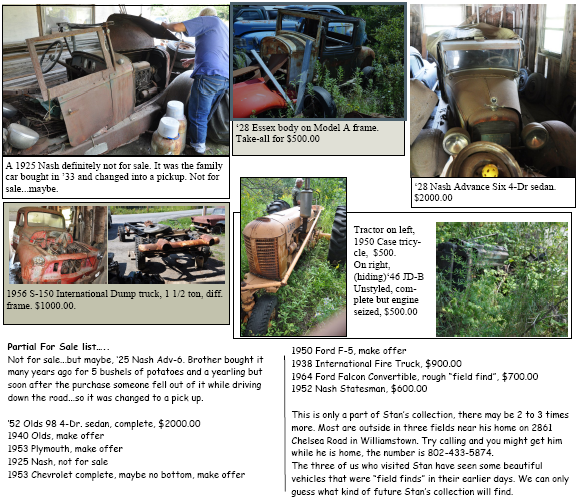Progress is great. When a product appears on the market that increases the safety, service life, ease of maintenance, and the performance of our cars, it is a good thing. Perhaps you may have noticed there is a new type of brake line on the market.
A little history- Before WWII, many manufacturers used copper brake lines. Copper is both easy to form, and resists corrosion well. Unfortunately, copper is also prone to cracking. Shortly before the war, there was a transition to steel tubing for brake lines. Steel did not have the cracking problem of copper, but it did corrode. Steel brake lines would often fail after only a few years of use. The options to prolong the life of steel brake lines included many types of coatings to protect against corrosion.
Steel brake lines failing due to corrosion was not acceptable to safety obsessed Sweden. Both Saab and Volvo experimented with epoxy coatings, anodized steel and various other coatings to protect the brake lines. Volvo introduced a new type of brake line in 1976. This new brake line consisted of 89% Copper, 1% Iron, and 10% Nickel. This alloy proved to be durable with the corrosion resistance of copper and the crack resistance of steel.
Years ago when doing repair work I found steel brake lines would only last a few years before they would fail due to corrosion. I used anodized brake line exclusively for the last ten years or so. This anodized line lasts much longer than bare steel line.
Copper-Nickel tubing is much easier to form than steel, resists kinking and virtually will not corrode. I have found that a tubing bender is useful, but not necessary to bend Copper-Nickel tubing.
Cutting and bubble flaring Copper-Nickel tubing is actually quite easy. As with steel tubing, it is imperative to start with a nice, clean square cut. Nothing but a sharp tubing cutter will do.
Make sure there are no burrs on the end of the tube, and that you have a nice clean cut. Like steel, it may be necessary to dress the cut tube with a fine file before flaring. Unlike steel, I have found it is NOT necessary to chamfer the fresh cut end of the tube before using the flaring tool.
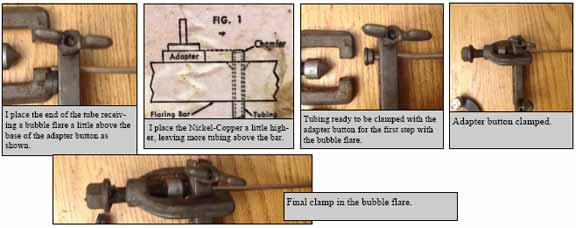
Because the Copper-Nickel is softer than steel, I found I have to be more gentle with a bubble flare tool. It takes far less effort to drive the mandrel in to the tube, and to pinch the final flare. I also found that it works better to use a tad more material for the flare than with steel. When installing and tightening the flare nuts, I found it takes less effort to tighten the fittings with no leaks. The Copper-Nickel tubing has more “squish” than steel.
I recently replaced all of the brake lines on my Chrysler minivan. With the ABS pump, proportioning valve, duel circuits and the many transitions to rubber hose and back to metal, there were many individual lines to form and many fittings to flare. The Copper-Nickel was far easier to work with than steel would have been. When I finished the job, there were no leaks.
Copper-Nickel brake line is stocked at most auto parts stores, and the price is comparable to anodized steel tubing. Do yourself a favor and try some the next time you have to replace a brake line. You won’t be disappointed!
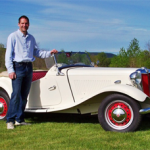 Please email all inquiries to: Dave
Please email all inquiries to: Dave
or snail mail
32 Turkey Hill Road
Richmond VT 05477










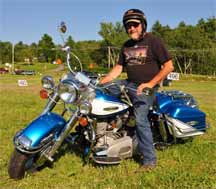 Mark McDermiott is pictured right at the 2014
Mark McDermiott is pictured right at the 2014 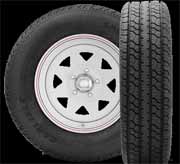 Trailer tires are quite different from traditional passenger car and truck tires. Trailer tires are not designed for either tractive effort or steering adhesion. The tread design is not optimized for ride comfort or noise reduction. Most importantly, the side walls are designed to reduce trailer sway and provide optimum control.
Trailer tires are quite different from traditional passenger car and truck tires. Trailer tires are not designed for either tractive effort or steering adhesion. The tread design is not optimized for ride comfort or noise reduction. Most importantly, the side walls are designed to reduce trailer sway and provide optimum control.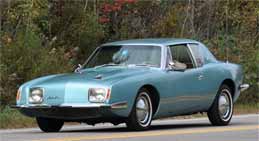 Ray and Julies’s ‘64 Studebaker Avanti R2 has been sold to someone in the state of Washington.
Ray and Julies’s ‘64 Studebaker Avanti R2 has been sold to someone in the state of Washington.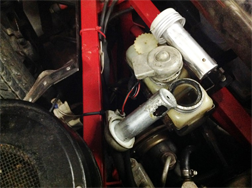 This summer I decided it was time to figure out what was wrong with the car and fix it. I found a sunken carburetor float in the rear carburetor, a torn diaphragm in the front carburetor, a bad fuel pump and a dead battery. Once I got these issues sorted out, I began to tune the car and get it running again. It soon became apparent that there was an issue with the brakes. Both front and rear brakes were dragging, and the pedal did not feel right. I know that the brake fluid has not been changed in at least 15 years. When I removed the caps to inspect the brake fluid, I found a nasty surprise. We all know that brake fluid absorbs moisture. Due to some spring flooding this year, the building the car was stored in, had several inches of standing water on the floor of the garage.
This summer I decided it was time to figure out what was wrong with the car and fix it. I found a sunken carburetor float in the rear carburetor, a torn diaphragm in the front carburetor, a bad fuel pump and a dead battery. Once I got these issues sorted out, I began to tune the car and get it running again. It soon became apparent that there was an issue with the brakes. Both front and rear brakes were dragging, and the pedal did not feel right. I know that the brake fluid has not been changed in at least 15 years. When I removed the caps to inspect the brake fluid, I found a nasty surprise. We all know that brake fluid absorbs moisture. Due to some spring flooding this year, the building the car was stored in, had several inches of standing water on the floor of the garage.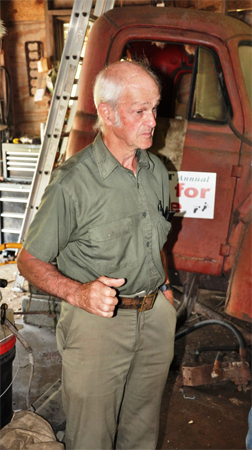 What do we do when we decide it is time to downsize our collection? How do we even get started? We might decide we want to move where the snow doesn’t fly or that we simply want less to deal with. What ever the reason, the collection that seemed to have accumulated very easily and some might say ‘over-night’ can be a very daunting task when you are looking to scale down.
What do we do when we decide it is time to downsize our collection? How do we even get started? We might decide we want to move where the snow doesn’t fly or that we simply want less to deal with. What ever the reason, the collection that seemed to have accumulated very easily and some might say ‘over-night’ can be a very daunting task when you are looking to scale down.